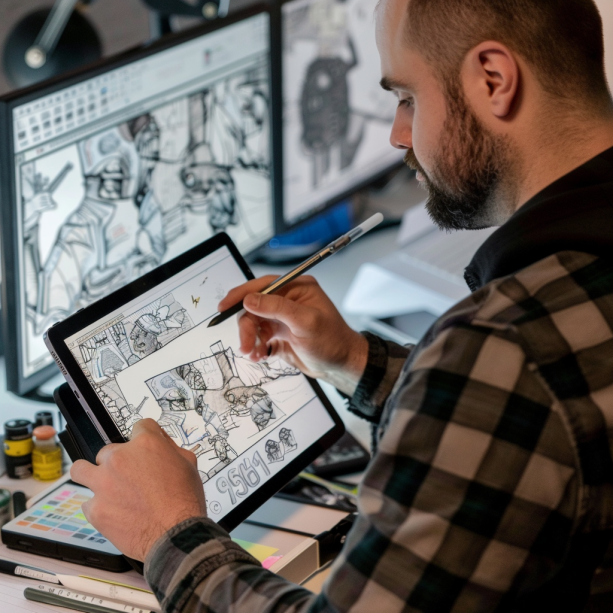
Hey there! If you’re in the healthcare industry, you probably understand the importance of effective marketing in reaching your audience. With the rise of digital platforms, one of the most engaging ways to connect with your target market is through medical animation videos. These captivating visual aids not only educate but also entertain, making complex medical concepts more understandable and memorable. So, if you’re ready to dive into the world of medical animation, you’re in the right place! Let’s explore the topic: How to Create Medical Animation Videos and boost your healthcare marketing efforts.
Importance in the Healthcare Industry
In today’s fast-paced digital landscape, the importance of medical videos cannot be overstated, particularly in the medical industry. Healthcare professionals are increasingly relying on visual aids to communicate complex medical concepts to patients, colleagues, and students. This surge in demand has led to the evolution of various types of animation tailored specifically for the medical field. From surgical procedures to pharmaceutical mechanisms, medical animation serves as a powerful educational tool, offering clarity and comprehension in ways that traditional methods often cannot achieve. Whether used for patient education, marketing, or training purposes, medical videos play a crucial role in advancing healthcare practices and enhancing patient outcomes.
Step 1: Define Your Objective
Before you start creating your medical animation video, it’s crucial to clearly define your objective. What message do you want to convey? Are you trying to explain a medical procedure, educate patients about a specific condition, or promote a new healthcare product or service? Understanding your goal will guide the entire creative process and ensure that your video effectively communicates your message.
Step 2: Scriptwriting and Storyboarding
Once you have your objective in mind, it’s time to craft a compelling script. Keep it concise, clear, and engaging, focusing on the key points you want to convey. Remember, your audience may not be familiar with medical terminology, so use language that is easily understandable.
After finalizing the script, create a storyboard to outline the visual elements of your video. This step is crucial as it helps you visualize how each scene will unfold and ensures that your message flows seamlessly from start to finish. Pay attention to details such as character design, scene transitions, and visual metaphors to enhance the overall storytelling experience.
Step 3: Choose the Right Animation Style
Medical animation videos come in various styles, from 2D animation to 3D animation and everything in between. Each style has its own unique advantages, so choose the one that best fits your message and target audience. For example, 3D animation offers a high level of realism and detail, making it ideal for showcasing intricate medical procedures, while 2D animation is more stylized and versatile, suitable for simplifying complex concepts.
Step 4: Design and Animation
Now, it’s time to bring your storyboard to life through design and animation. Work closely with talented animators and designers, like the experts at Austin Visuals, to create stunning visuals that captivate your audience. Whether you’re illustrating the inner workings of the human body or demonstrating the benefits of a new medical device, attention to detail is key to creating a compelling medical animation video.
Step 5: Add Voiceover and Sound Effects
Enhance your medical animation video with a professional voiceover and sound effects. Choose a voice that resonates with your target audience and conveys your message with clarity and authority. Sound effects such as heartbeat rhythms, swooshing sounds, and background music can add depth and immersion to your video, making it more engaging and memorable.
Step 6: Review and Iterate
Once your medical animation video is complete, don’t forget to review it carefully before finalizing it. Seek feedback from colleagues, stakeholders, and even potential customers to ensure that your message is effectively communicated and understood. Iterate on any feedback received to fine-tune your video and make it as impactful as possible.
Step 7: Distribute and Promote
Congratulations, your medical animation video is ready to be shared with the world! Distribute it across your website, social media channels, email newsletters, and other digital platforms to maximize its reach. Don’t forget to include relevant keywords and tags to optimize search engine visibility and attract your target audience.
Additionally, consider investing in targeted advertising to reach specific demographics or geographic regions. Platforms like Google Ads and Facebook Ads allow you to tailor your campaigns to reach potential patients who may benefit from your healthcare services or products. If you want to read more about “The 7 Best Uses for 3D Medical Animation,” just visit our blog page now!
Why Choose Austin Visuals?
At Austin Visuals, we specialize in creating high-quality medical animation videos that educate, inspire, and engage. With years of experience in the healthcare industry, our team of talented animators, designers, and storytellers understands the unique challenges and opportunities of healthcare marketing.
By choosing Austin Visuals, you’re not just getting a medical animation video – you’re getting a strategic partner dedicated to helping you achieve your marketing goals. From concept development to final delivery, we work closely with our clients to ensure that their message is effectively communicated and their audience is captivated.
So why wait? Take your healthcare marketing to the next level with Austin Visuals, the best healthcare marketing solutions provider today!
Conclusion
Medical animation videos are powerful tools for healthcare marketing, allowing you to educate, inform, and inspire your audience in a visually compelling way. By following the steps outlined in this guide and partnering with a trusted animation studio like Austin Visuals, you can create impactful videos that resonate with your target market and drive results for your business. So what are you waiting for? Start creating your medical animation video today and unlock the full potential of healthcare marketing solutions!
Ready to revolutionize your healthcare marketing strategies? Elevate your visual communication with cutting-edge medical animation videos from Austin Visuals. Our team of skilled animators specializes in crafting captivating visuals tailored to the unique needs of the medical industry. Don’t miss out on the opportunity to engage and educate your audience like never before – contact Austin Visuals today to bring your medical concepts to life!
FAQs: How to Create Medical Animation Videos
What software is typically used to create medical animation videos?
Professionals often use advanced software such as Autodesk Maya, Cinema 4D, or Blender, which offer robust tools for creating lifelike animations and visual effects tailored to the medical field.
Do I need specialized knowledge to create medical animation videos?
While a background in animation or graphic design is beneficial, it’s not always necessary. Working with a professional animation studio like Austin Visuals can provide expertise in translating medical concepts into engaging visuals, regardless of your level of expertise.
How long does it take to create a medical animation video?
The timeline can vary depending on the complexity of the project. Generally, it involves stages such as scripting, storyboarding, animation, and post-production, with timelines ranging from a few weeks to several months.
Can medical animation videos be customized to fit specific branding or messaging?
Absolutely! Customization is key to ensuring that the animation aligns with your brand identity and effectively conveys your message. Work closely with the animation team to integrate branding elements seamlessly into the visuals.
What are the benefits of using medical animation videos in healthcare marketing?
Medical animation videos offer a visually engaging way to explain complex medical procedures, mechanisms, and concepts to patients and colleagues. They enhance understanding, improve retention rates, and can serve as powerful tools for patient education, marketing campaigns, and training initiatives.






